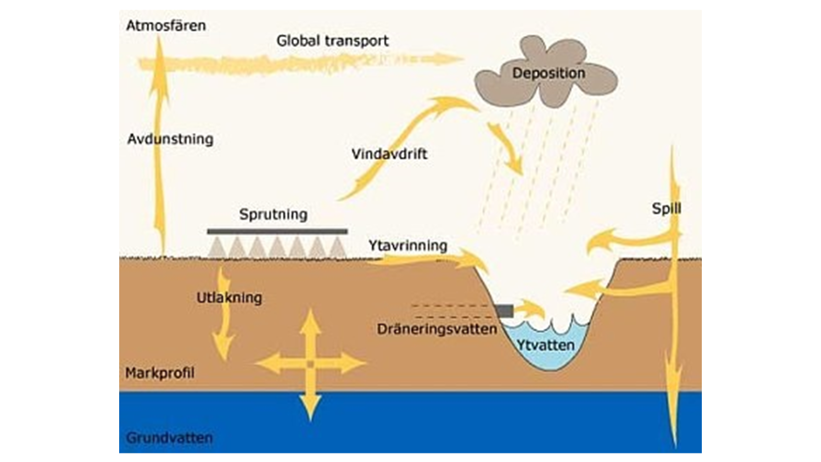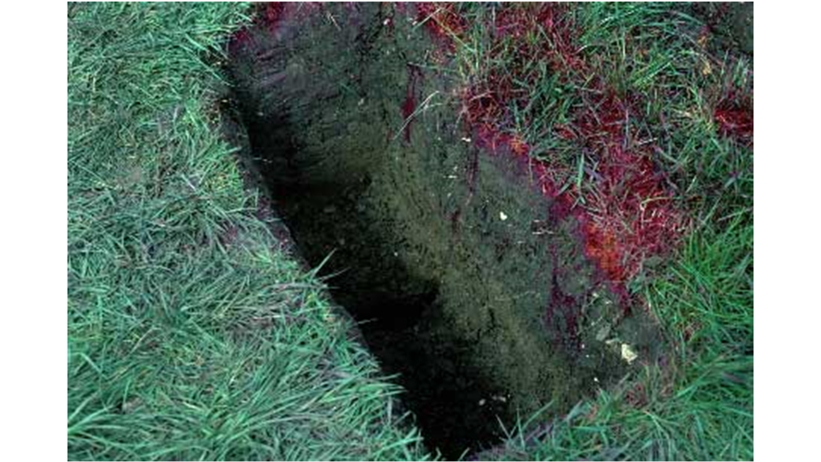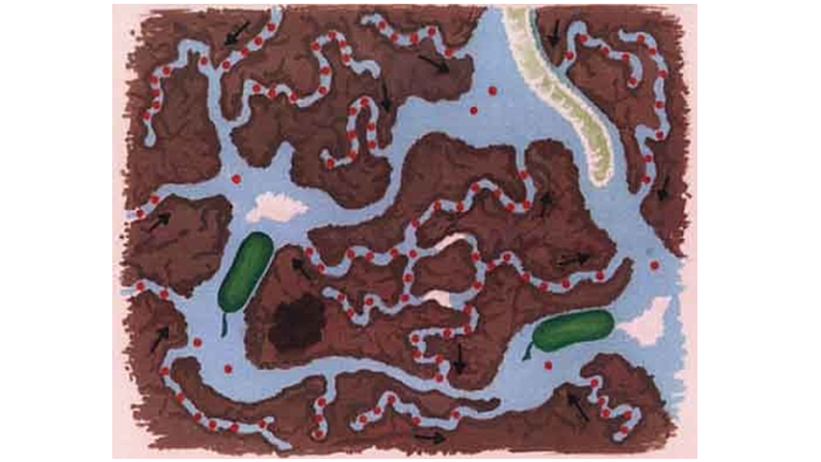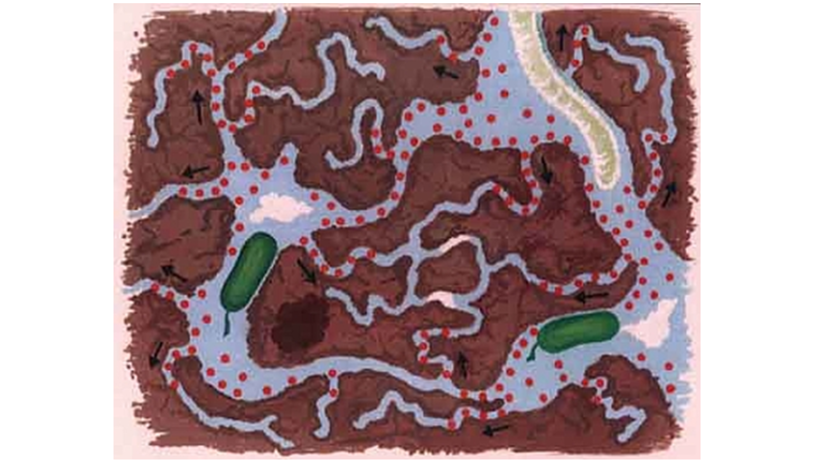Pathways of pesticides in the environment
What happens to pesticides (plant protection products) that are sprayed on arable land? The pesticides remain in the environment for a shorter or longer period and in some cases can even make their way far from the place where they were used.
Transport to the environment
Pesticides are often found in rivers or streams but also in the groundwater. Residues from pesticides have even been found in rain. In recent years, pesticides have also been screened in the terrestrial (land) environment and residues in, for example, soil, pollen, nectar, plant material and bees have been found. The risk of unwanted spread of pesticides to the environment is mainly related to cropping and spraying techniques and also to natural conditions and processes (climate, soil properties, etc.).

Some of the pesticides sprayed on fields can be transported to the surrounding land and water. Pesticides can be transported away in the air through wind drift and evaporation and then carried back to soil or water by rainfall. Surface run-off and percolation of water to the drainage system can carry pesticides out into rivers and lakes. Leaching of water through the soil can carry pesticides down to the groundwater. Various spillages during handling can also lead to pesticides going astray into the environment.
Read more
CKB works to develop knowledge about the different ways pesticides spread in the environment in order to be able to develop and evaluate models and to be able to propose effective measures. Read more of the different areas of operation.
Also read more below.
Contact
-
PersonMats Larsbo, Researcher at the Department of Soil and EnvironmentSoil and Environmental Physics


